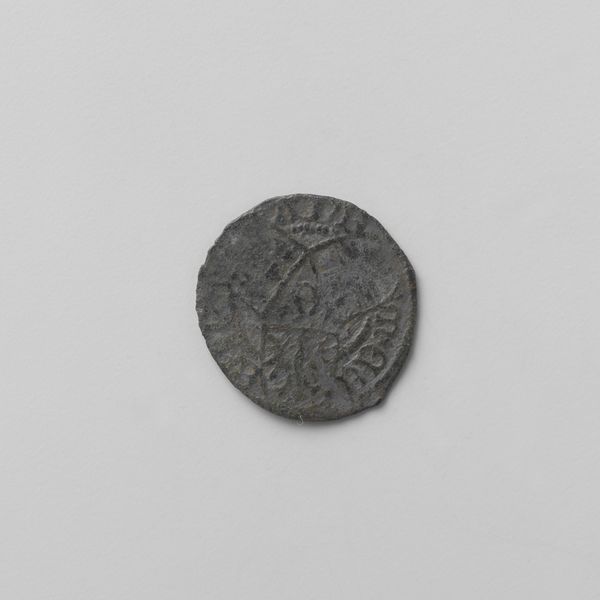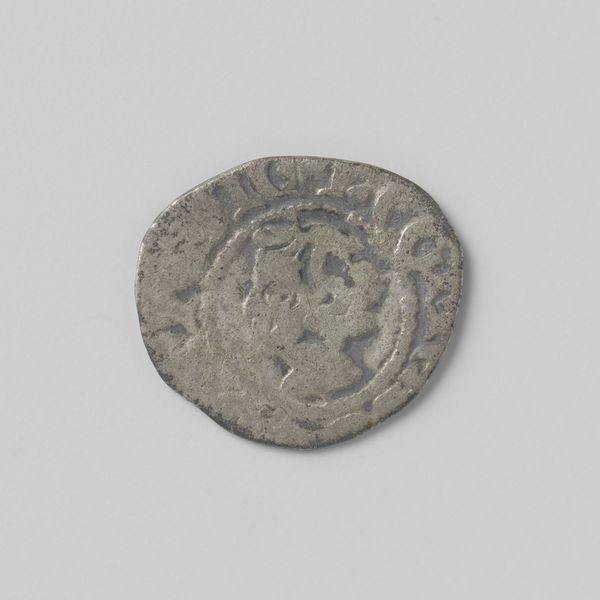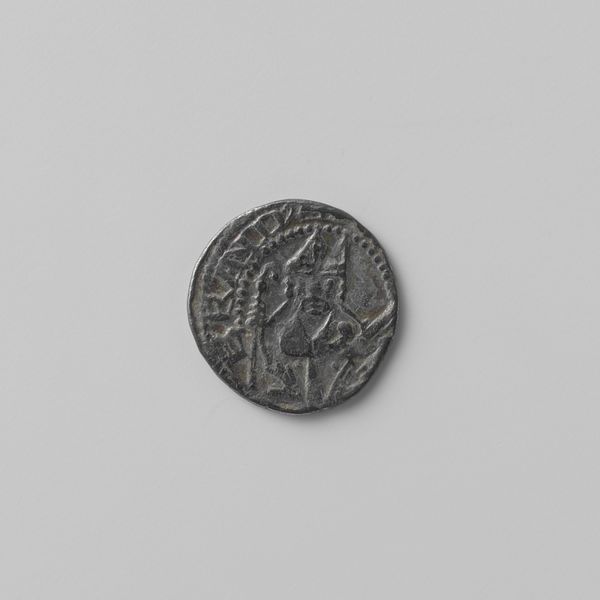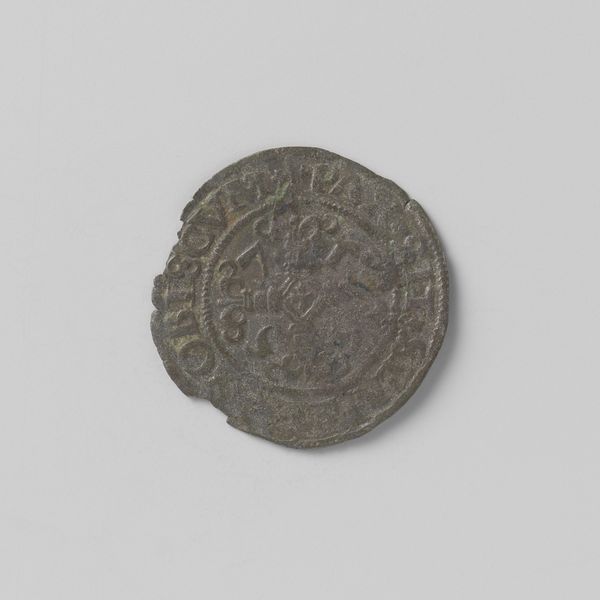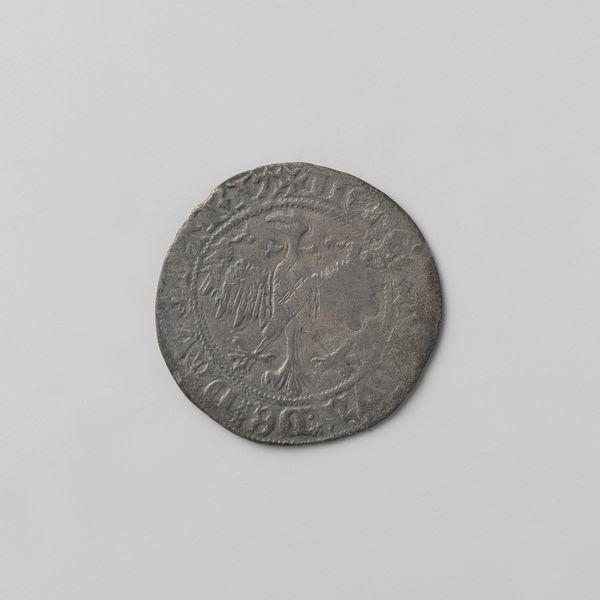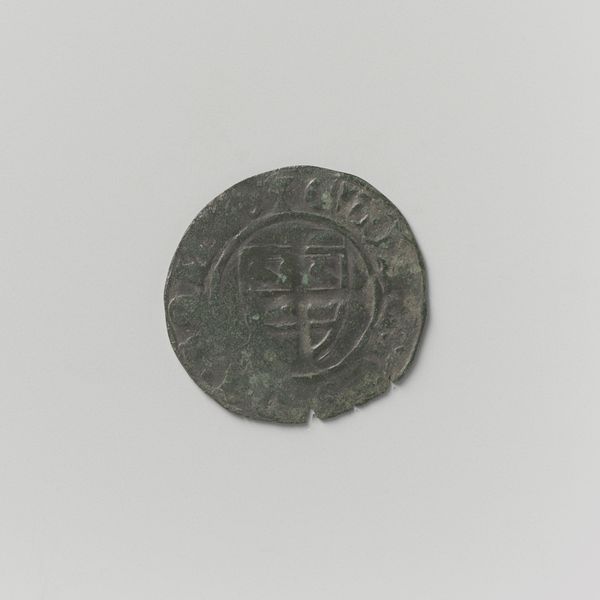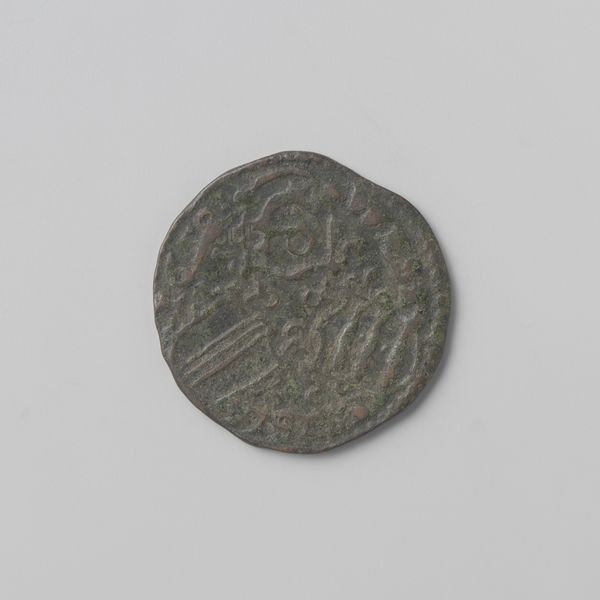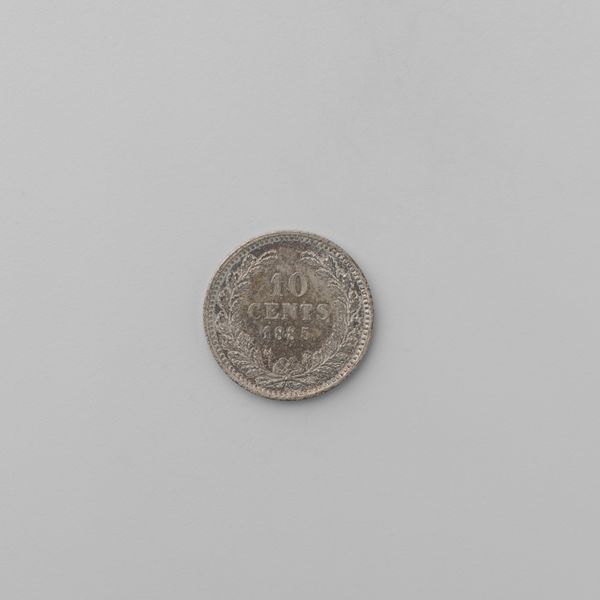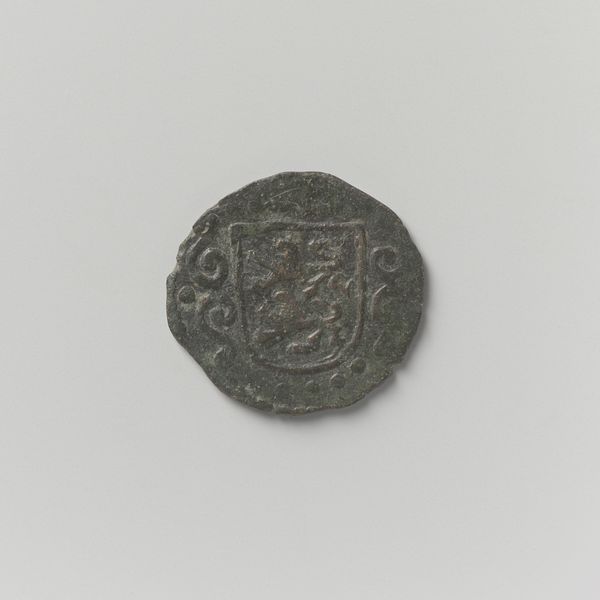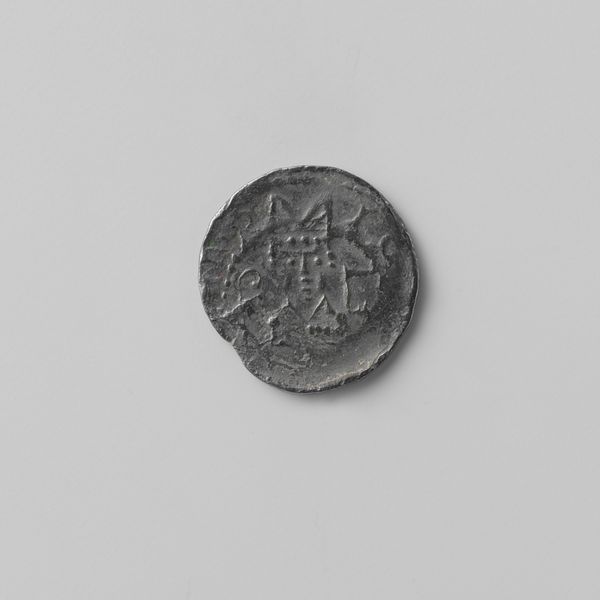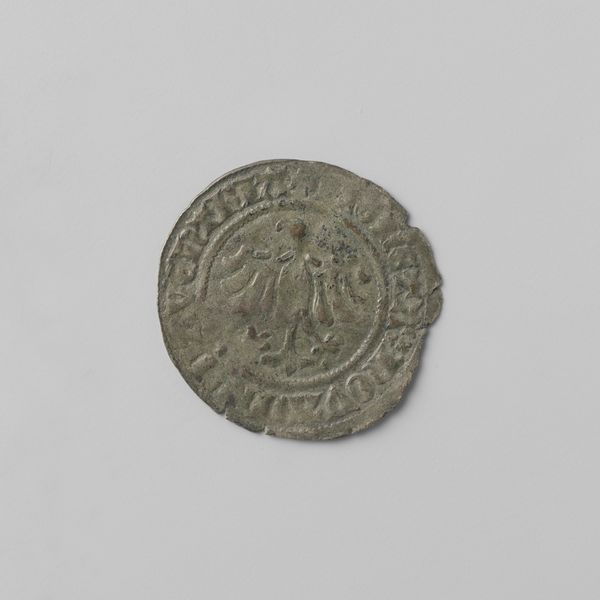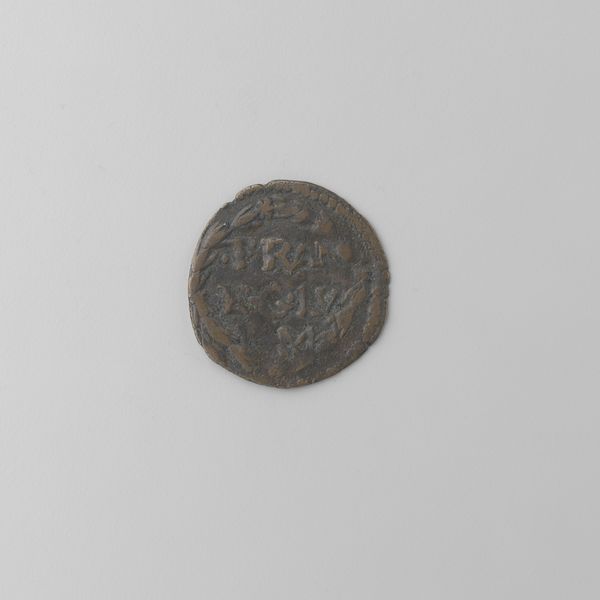
metal, relief
#
portrait
#
medieval
#
metal
#
relief
#
coin
Dimensions: diameter 1.5 cm, weight 0.56 gr
Copyright: Rijks Museum: Open Domain
This Utrechtse penning was struck in the early 13th century, during the reign of Dirk van Ahr, and it’s made of silver. Consider the process: metalwork is a craft that requires particular skills and techniques; in this case, die-striking, which is a technique used to stamp an image onto the metal. The incuse impression of Dirk's portrait gives us insight into the skilled labor involved, and the value placed upon the object itself. It’s interesting to think about how the production of this coin embodies social significance. It signifies the wealth, power, and status of its owner, and more broadly, the rise of a monetary economy. Despite its small size, the coin acted as a facilitator for trade and economic exchange during the Middle Ages. It also reflects the integration of craft practices within broader systems of labor, politics, and consumption. Ultimately, the Utrechtse penning encourages us to expand the boundaries of art history, and to appreciate the intersection of craft, design, and materiality.
Comments
No comments
Be the first to comment and join the conversation on the ultimate creative platform.
